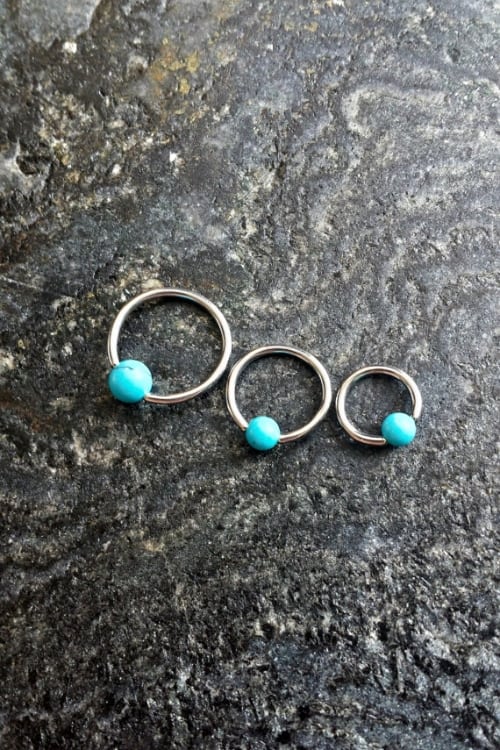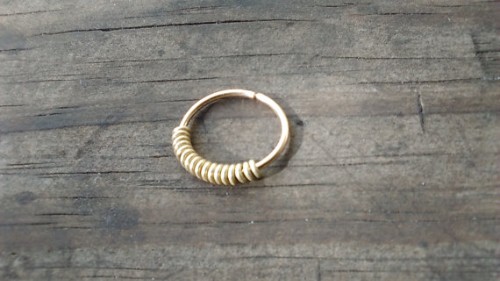Orbital piercings are always placed in the ears and involve two holes with a circular piece of jewelry going through both.
The circular shape of the jewelry is what defines and distinguishes the orbital style piercing from an industrial one, which uses a bar rather than a ring.
These piercings can be placed anywhere in the ear, although the most popular choices of location include the earlobes and the helix.

Procedure
The process of getting an orbital ear piercing is relatively straightforward. After cleaning the piercing area, the piercer makes the perforations with a sterilized needle, then inserts the jewelry piece.

An orbital piercing involves two holes. It’s helpful to keep in mind that the two perforations can, but don’t have to be done at the same time.
If you already have an existing hole in your ear which will be suitable for an orbital ear piercing, you can simply add a second one.
Spreading the piercing over two appointments is also a good solution if you’re worried about pain – just remember that the first hole must be completely healed before you go in for your second perforation and jewelry insertion.

Jewelry
Ball closure rings are the most common type of jewelry used for these types of piercing – these are hoop-shaped pieces, closed using a captive bead ring.
Other options for orbital piercing jewelry include segment rings, circular barbells, and horseshoe rings.
The rings come in a variety of materials, such as titanium and white or yellow gold, though surgical steel will probably be the best choice for the initial insertion. Once your piercing has healed, you can swap it out for any ring you like!
There are endless options of colors and styles, particularly if your piercing is placed in such a way that it allows for a segment ring as well as a captive bead ring.
Check out our gallery below to see some cool placement and jewelry examples and find some inspiration!

There’s more to choosing your jewelry piece than aesthetics, though – it’s very important to choose the correct size, especially for the initial piercing.
If the first ring that’s placed in the piercing is too large, it could lead to longer healing and issues such as migration.
Migration is an unwanted process that involves the jewelry moving from its initial location, sometimes gradually moving outside of the skin entirely.

Orbital piercing pain factor
This type of piercing can technically be placed on any part of the ear, and your chosen location will have a significant impact on the level of pain you’ll experience.
In general, orbital piercings made in the lobe of the ear will be less painful than perforating cartilage.
Recommended Next: Don’t miss our guide to daith piercings next!
As with any piercing, your own pain tolerance will be one of the main determining factors on just how much it’s going to hurt.
The piercer’s skills will also have an influence on how swift – and therefore less painful – the process will be, so that’s another reason to choose your piercer carefully.

If you’re worried about the pain level, consider spreading the piercing process over two procedures – you can have one perforation done during the first appointment, let it heal, and come in to get the second perforation and complete the piercing.
Healing and aftercare
We all know how important it is to look after a piercing appropriately. It can be a bit of a hassle, sure, but at the end of the day, our health (and money) are at stake here.
The healing time of this type of piercing will depend primarily on the exact location on the ear. Cartilage piercings, such as a helix orbital piercing, generally take a relatively long time to heal – between 3 to 5 months. Lobe piercings require much shorter healing time, usually between 8 and 10 weeks.
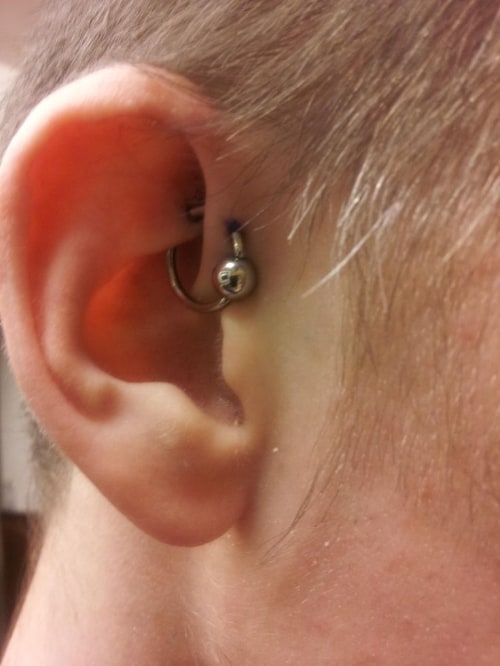
Looking after your piercing
Taking good care of the piercing will speed up the healing process and prevent complications. Your chosen piercer will give you specific aftercare tips to follow. In general, it’s important to:
– Keep the jewelry in place until fully healed – removing or replacing the jewelry piece while the piercing is still healing will strain the wound and likely lead to infection and/or scarring. The jewelry placed during the piercing process should stay in place until you’re sure the skin has healed completely.

– Clean the pierced area regularly – this should be done three times a day until the piercing is fully healed. Use warm saline water or another product recommended by a professional piercer. Never clean the piercing with rubbing alcohol or hydrogen peroxide.
– Avoid touching the pierced area and the piercing itself – ideally, you should only touch the piercing when you’re cleaning it. Moving the jewelry piece around could strain the wound and prolong the healing process.
Touching the area unnecessarily also increases the risk of infection, through the transfer of bacteria from your hands to the wound. If possible, you should also try to sleep in a position in which the pierced area will not be disturbed.

– When drying the pierced area, use a clean, dry towel – this is another tip for preventing contamination and infection. Use a separate small towel or cloth, and pat the area dry rather than rubbing the skin to avoid pulling on the piercing and damaging the skin.
Recommended Reading: Read all about monroe piercings in our guide.
Cost
The cost of an orbital ear piercing will vary between piercing studios, though it’s worth pointing out that the cheapest option may not always be the best one.
Piercings are tricky to get right and involve the risk of infection and tissue damage, and this risk is minimized through performing the piercing procedure safely and expertly, in a hygienic environment. It may, therefore, be worth paying a little bit more in exchange for a safer procedure – and peace of mind.

In general, the approximate cost of an orbital piercing will fall somewhere between $30 – $100.
If you’re on a tight budget and need to keep the cost to the minimum, consider paying more for the procedure and saving some bucks by choosing a cheaper piece of jewelry.
You can always upgrade your jewelry once the piercing has healed, and a botched piercing procedure might be costly to put right down the line – in addition to being potentially dangerous to your health.

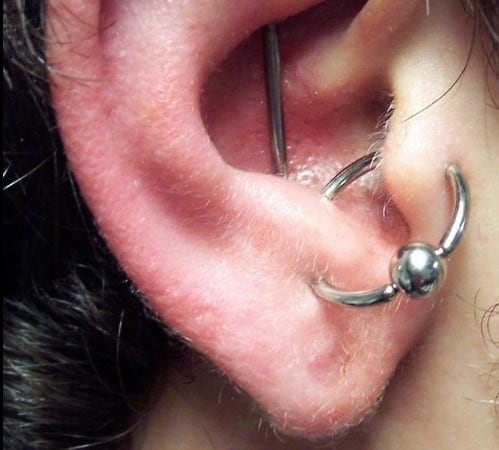



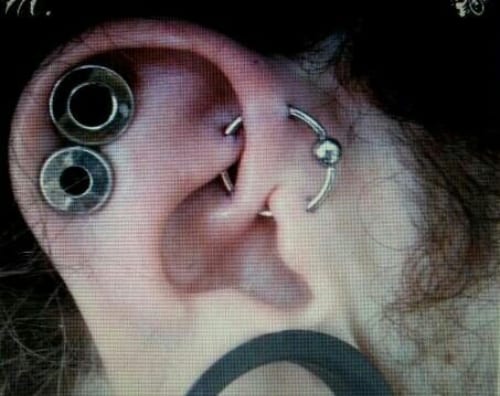











Jewelry Options
The captive bead ring is a popular jewelry choice for an orbital piercing. There are some other jewelry options which include horseshoe rings, segment rings, and circular barbells. For a stylish look, you may go for heart-shaped orbital rings that can be worn on the helix, lobe or conch.
Here’s a look at some cool ideas for orbital jewelry.








